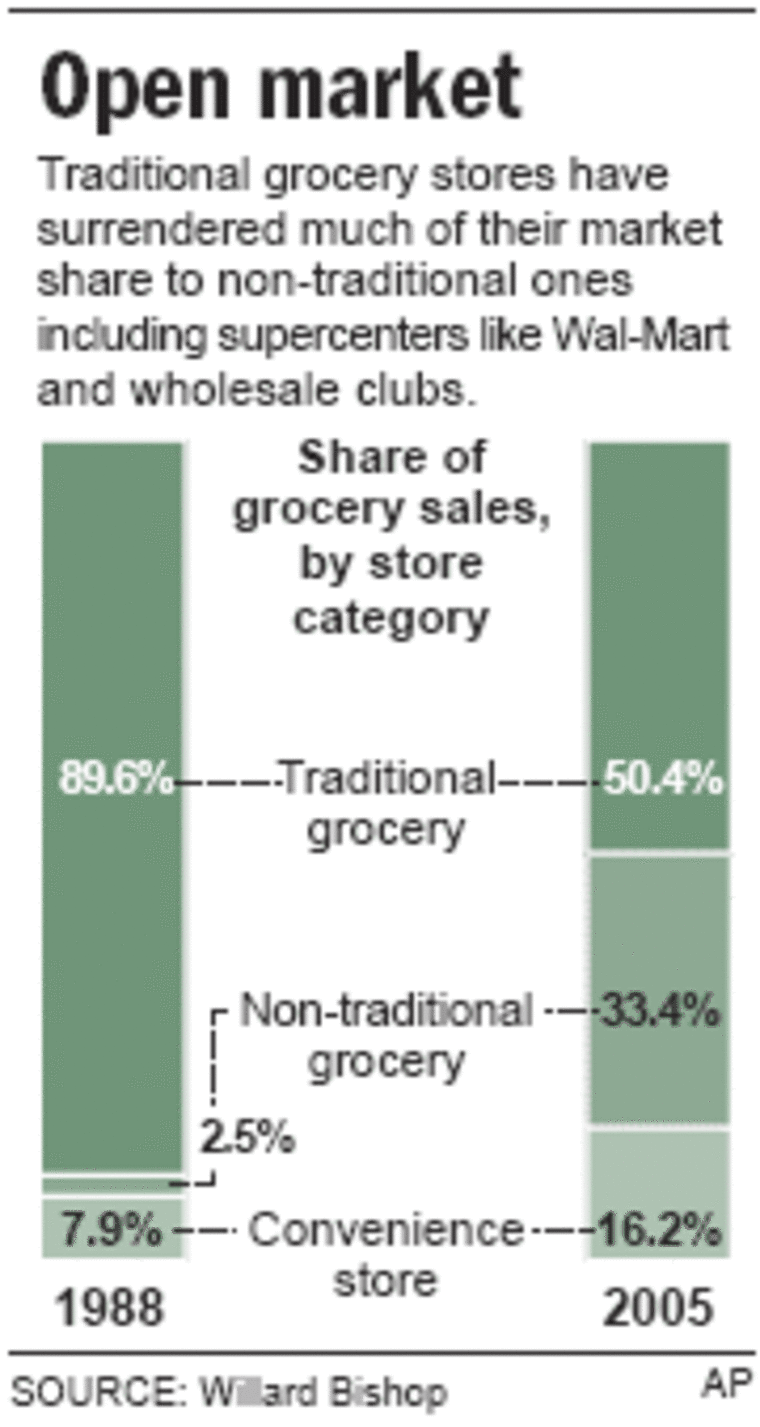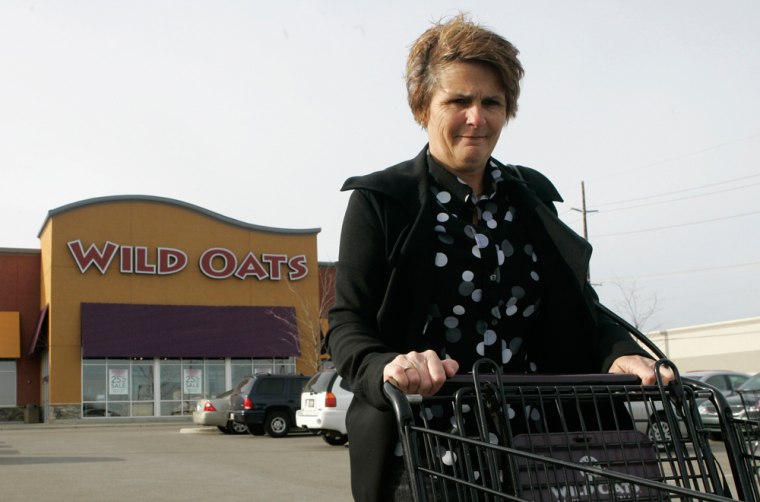When Roberta Mand needs groceries, she has a world of choices in her own backyard.
For regular shopping, she goes to her neighborhood Kroger Co. store. But for steaks, she prefers the Costco Wholesale Corp. store. For a pecan-encrusted tilapia to take home for dinner, she’s off to The Fresh Market. And if she’s hankering for sushi, she hits the Wild Oats Markets Inc. store a couple of minutes away.
“It just depends on what I’m looking for,” said Mand, a married mother of two who works from her suburban home and typically cooks five nights a week. “I like variety.”
These are spicy times for those who like variety in their grocery shopping choices, in price, selection and convenience. More retailers are using food to lure customers, intensifying competition while taking bites of the nearly $6,000 a year American households spend on groceries.
For most households, the days when nearly all grocery shopping was done weekly at a supermarket with a meticulously detailed list are fading into the past. Now there are club stores to buy in bulk at discount prices, supercenters for combining grocery with clothes and other shopping, specialty stores for gourmet choices, and, for quick pickups of basic grocery items and snacks, not just convenience stores but expanded gas stations, drugstores, dollar stores and big-box retailers.

A local shopper this week could go to the Sam’s Club store to stock up on macaroni and cheese at 15 boxes for $7.76; or run into the Shell gas station to buy one box for $1.39. Besides clothes and electronics, the Target store advertised four boxes of snack crackers for $7 total, barely half the grocery price. And a Kroger store sold a range of fare far beyond what would have been found in the supermarket a generation ago — Chilean sea bass, Indian chutney, African-grown coffee; a whole “Nature’s Market” section catering to the fast-growing organic foods market.
A recent annual industry report by Willard Bishop Consulting predicts that by 2010, less than half of what it projects as $1 trillion annual grocery and consumables sales will be in traditional grocers.
“Everybody in the world seems to be offering grocery items,” said Jack Horst, grocery analyst for the Kurt Salmon Associates consulting firm.
He expects the trend to grow: “Once I’ve got somebody in my store, whether I’m a CVS pharmacy or Ractrack convenience store, I want to make as much money from the customer as I can.”
David B. Dillon, chief executive of Cincinnati-based Kroger, said the business is being transformed by “the fragmenting of where people buy groceries,” and not just the emergence in the last two decades of discounter Wal-Mart Stores Inc. and of higher-end competitors such as Wild Oats and Whole Foods Markets Inc.
“Most places that are retailers now sell food in one fashion or another, trying to draw on that traffic element,” Dillon said in an interview. “That meant that the relevancy to the customer became more important; connecting with the customer.”
Kroger, the nation’s largest traditional grocery store chain, has kept prices down overall while expanding its store formats. No-frills Food 4 Less discount stores operate in some markets and upscale Fresh Fare stores in others, with Marketplace stores — double the typical size of Kroger stores and offering such nonfood goods as bedroom furniture, office supplies and jewelry — in growing suburban areas in several states.
“Our strategy at Kroger is to recognize that customers differ in their needs,” Dillon said. “I think we’ve addressed it by fragmenting ourselves a bit, because that’s the way the customer wants it.”
The leading traditional grocers also have been remodeling stores, expanding selections and improving service. Supervalu Inc. plans to spend $1.2 billion in the next year on remodeling and new stores.
“It’s not always everyday pricing,” Jeff Noddle, Supervalu’s chief executive, told analysts this month, saying customers are drawn by “a combination of many factors.”
The big grocers and Wal-Mart have responded to growing demand by expanding organic and specialty food sections
“The conventional markets, seeing how successful Whole Foods has been, are copying us,” John Mackey, chief executive of the Austin, Texas-based natural foods supermarkets, told analysts last month. But Whole Foods sees plenty of room left, aiming to double sales, to $12 billion annually, by 2010.
Wal-Mart, now the national leader in grocery sales, continues expanding, with nearly 2,200 Supercenters, and also sells groceries in Sam’s Club stores and Neighborhood Markets. Target Corp. has steadily added grocery-selling SuperTarget stores, to nearly 200. And Britain’s Tesco PLC, one of the world’s largest retailers, plans to test the American grocery waters this year with stores in California, Nevada and Arizona.
“Most of the competitors are fighting half a dozen or more wars,” said Burt Flickinger III, managing director of Strategic Resources Group. He said Kroger is one of the few grocers to have shown an ability to compete head-to-head with Wal-Mart; Kroger said last year it increased market share in 20 of 28 areas where it faced major Wal-Mart competition.
“Over time, all the supermarkets, at least those that survive, will survive by having gotten better,” Dillon said.
Meanwhile, smaller chains such as Big Bear and Eagle Food Centers disappear or get swallowed up, as Dillon’s family chain did by Kroger. Albertson’s, which was the nation’s second-largest traditional grocer, was split up last year, with Supervalu buying 1,100 of its stores.
Horst and other analysts say the traditional grocers will need to keep growing — by acquisitions and other means — to take advantage of efficiencies of size.
For shoppers such as Sarah Brown, a suburban Cincinnati nurse, more is better.
“I’m more of a convenience shopper; to me, my time is worth a lot,” said Brown, who often shops at Kroger or Meijer Inc. stores but also goes to specialty stores. “It’s nice to have more choices. If I want to splurge and get something a little pricier, I do that, too.”
